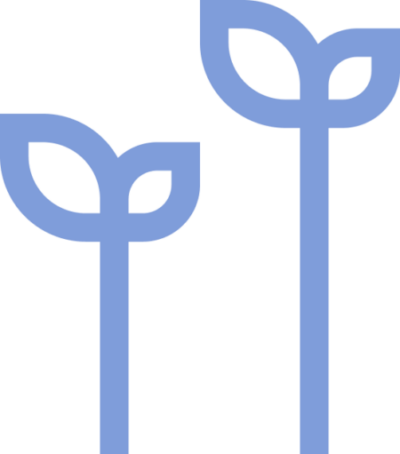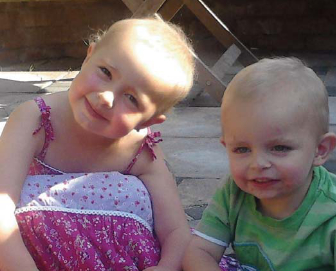Parent stories
Finding out more about how other parents have navigated their child’s condition may help you to find answers, understanding or more information about what others have been through and how they have coped or supported their child.
Sarah's story about Anna's alopecia
Anna’s mum, Sarah says: Anna’s beautiful. Her head is fluffy like a peach. It smells delicious. Soon after she was born, Anna’s baby hair fell out, and it never grew back. So Anna has never really had hair.
When she was 2 or 3, people would say, ‘Don’t worry, it’ll grow back.’ But I knew by then it wouldn’t. When she was 4 or 5, she used to sigh and wish she could wear hairbands and bobbles.
Anna’s mum continues: Anna’s school has been great. When she was little, she used to get hot and cast off her wig in assembly. Her teacher would just say, ‘Now go and hang it up on your peg.’ But now she’s older, she can manage a wig better. It annoys me when people whisper, ‘Is she ill?’ I don’t like people seeing it as a disability, or a disaster. But it was helpful recently when we were put in touch with another girl her own age with alopecia.
Her grandad says, ‘You’re the most beautiful bab!’. We try not to make a mountain out of a molehill. We don’t want her to be defined by her physical appearance. We don’t hide from her there will be times in her life when it’s harder. But we remind her that everyone has some troubles in their life. And we love her exactly as she is.
She’s a girl who knows her own mind. We wouldn’t change her for the world.
Story provided via the Birmingham Women’s and Children’s NHS Foundation trust.
Beccy's story about Tom's ichthyosis
An hour after Tom was born, his skin had blistered all over his body. ‘It was very traumatic,’ says Tom’s mum, Beccy. ‘He looked as if he’d been burned.’
Tom was taken straight into special care, where it took the doctors a while to diagnose his condition. ‘Looking back, it’s a bit of a blur,’ Beccy continues. ‘If he wasn’t shiny with the cream, it was time to put more on. It was daunting at first. Even holding him made his skin blister.’
As a baby, Tom’s skin needed thick grease, which can damage the washing machine as well as other clothes. But as he has grown older, it has got easier. Though Beccy worries that Tom finds it hard to put on weight. ‘They reckon you lose 1200 calories each day just through shedding skin,’ she says.
Nowadays, Beccy keeps in touch with other parents via ISG’s Facebook page. ‘It’s like a little family,’ she says.
Story provided via the Birmingham Women’s and Children’s NHS Foundation trust.
Anna's story about Milo's eczema
When Milo was around three months old, he started getting little red sore patches on his cheeks and chin. We would put a little bit of cream on them and they might get better for a short period of time, but when they would come back, they’d be worse. This continued for over a month until the patches were open and weeping and I would spend much of the night trying to hold his hands to prevent him from rubbing his face.
I spent so much time online, going down various rabbit holes of whether it was eczema, teething rash, an allergy or something else. Hours went by (mostly while I was awake during night feeds or holding Milo’s hands) where I looked up various images, trying to analyse how similar they were to my baby.
COVID was still rife so instead of getting a face-to-face appointment with my GP, I ended up sharing various images over text to show how he looked. This back-and-forth of messaging took place over several weeks as we tried different things and tested theories as to what was happening.
I finally managed to get a referral to see a paediatriac dermatologist who was able to help figure out the cause and recommend a plan to try to soothe the patches.
The one thing that I found most useful during our months of this (that felt longer thanks to the lack of sleep) was reading stories from other parents. It helped me to realise that perhaps there wasn’t a single problem and also that while some solutions worked for some babies, it didn’t necessarily work for others and I shouldn’t stick with something if we weren’t getting results, or in our case, if the problem was actually getting worse.
While certain ideas had been dismissed by the GP, the paediatrician listened and we tried a combination of solutions. These involved continuing with a dairy-free diet on my side while I was breastfeeding and as we continued with weaning, ensuring this was also dairy-free, keeping up with wearing clothing that was natural and covered hands during the night (with special nightwear that had silk mitts), and the biggest game-changer for us, new emollient and steroid creams that we used for a longer period of time.
After a month of the above, the patches were no more and both of us were getting more sleep. Furthermore, months later, Milo’s cheeks remain free of sores. I think after reading so much and hearing about other experiences, we were incredibly lucky to find a solution that has worked long-term. I know this isn’t always the case, so I am very grateful.
Leanne's story about Imelia's alopecia
This is Imelia with her little brother, Alfie.
Imelia is 4½. She has short, fine, fluffy hair, just like baby hair. Imelia never lost her hair. It’s just that her hair hasn’t really developed since she was a baby. So she has never known it any other way – and she doesn’t see it as a problem. She simply says,‘I’ve got short hair.’ She likes wearing pretty hair grips and alice bands.
‘There are hundreds of them around the house!’ says Leanne, Imelia’s mum. ‘She’s got more hair than I had at her age.’ Alfie’s hair is very short and fine, too. Imelia and Alfie are following in a family tradition. Their mum and their uncles have the same condition, and so do their grandmother and other relatives. Only the hair on their heads is affected. Their hair follicles are present, but don’t grow strongly. ‘They don’t know what causes it,’ says mum, Leanne. ‘We all have long eyelashes and strong nails. And body hair…
‘If I’m honest, I’d rather both of them were affected, rather than just Imelia,’ Leanne continues. ‘But I do think it’s easier for boys. My brothers used to shave their heads from the age of 14 or so.’ Imelia has a prescription for a wig. Leanne says when Imelia is
ready, they’ll go and choose one.Then Imelia can decide whether or not she wants to wear it.‘Maybe for family parties and celebrations,’ says Leanne.
As a child, Leanne says, ‘I had a nightmare of a time. I had so many tests, but they never found out what was wrong. Wigs weren’t available when I was little, so everyone knew that I didn’t have hair. Then I got one, at the age of about 6 or 7, so everyone knew it was a wig. I had a lot of bullying, and not much was done about it. My mum just told me to get on with it.
Imelia’s school has been much more supportive than Leanne’s was. ‘There’s a child with Down’s Syndrome in the class, and a child who’s partially deaf,’ says Leanne, ‘and the children themselves are very mixed. There are more differences within a class than when I was a kid.’ Leanne wears a wig all the time. Her partner, Steve, has never seen her without it. ‘It’s my security. I feel naked without it,’ she laughs.
Story provided via the Birmingham Women’s and Children’s NHS Foundation trust.
What next? Find more information on different skin conditions:
My child or teenager is struggling, what can I do?
Information leaflets
Providing your child with information on their skin condition can make them understand the condition and give them some control.
Support groups
Contacting generic, or condition-specific support groups, to get information on the condition your child is dealing with
Mind.org.uk
Mind.org.uk provides information and support for mental health.
Healthtalk website
Show them they are not alone - teenagers and young people give their side of the story on HealthTalk
Samaritans
If you or your child need to talk to someone in a crisis, Samaritan's helpline is available 24/7

Share your story to help us grow the BSPAD community
Your story can help other parents in understanding and learning more about their child’s condition.
Get in touch




